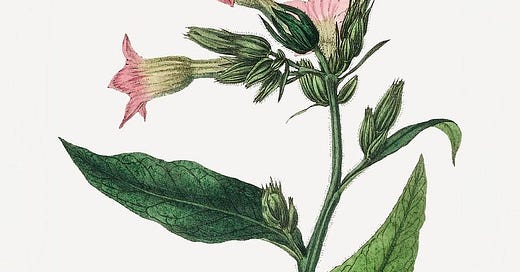Well… listen. I won’t even try to put a final number on the posts in this series, because I’ve already had to revise it twice. Let’s just say there’s at least one more coming. Here are the links for Part 1, Part 1.5, Part 2, and Part 3.
First, just to dispel any lingering concerns about cultural appropriation, it’s important to keep in mind that “orenda” isn’t an authentically Haudenosaunee term—at least not in the way that I’m using it here.
The written word “orenda” doesn’t exist in the Haudenosaunee language. They did not speak English or write in the Roman alphabet. It’s a phonetic construction used to parse a much broader concept into the technical language of modern ethnography. As I wrote in Part 1: J.N.B. Hewitt, for better or worse, made this term available to modern academics, as a container for the metaphysical concepts that he was describing. It’s not an idea that can be fully translated, because, again, the word itself is not enough to understand the cosmology from which the term originated. If anything, what the word “orenda” refers to is an absence—an orenda-shaped hole in the materialist worldview.
Here’s the disclaimer: when I refer to orenda, I am not claiming any special insight into Haudenosaunee culture or cosmology. I do not believe I am using it authentically. I am not trying to position myself as a representative of Haudenosaunee thinking. I’m not a part of the culture that first identified the existence of orenda; as I’ve described earlier in this series, it’s debatable whether J.N.B. Hewitt was properly educated in that cosmology himself, despite his family background. “Orenda” is a dummy word that Hewitt made available to modern, English-speaking academics, because we lack the language to talk about something that exists outside of our understanding.
That’s how I’m deploying “orenda” here: as a term of convenience, with as much respect as possible for the culture that developed the concept, and the recognition that it can’t be universally applied.
That said—let’s look at the orenda of tobacco.
Orenda and plant allies
The term “plant allies” gets bandied around in contemporary New Age and occult circles. From a materialist perspective—without a sufficient metaphysical grounding—it can sound pretentious, as if the person describing their “allies” sees themselves as the main character in a fairy tale. Does a flock of singing bluebirds help them get dressed in the morning, while a talking tree graciously hands them an apple on their way to work?
Orenda gives us a better language for describing how this alliance works. If we accept that all beings possess orenda, then we can look at certain plants directing their orenda in ways that align with human interests. This doesn’t happen because people are the most important things in the world. Rather, it’s because plants are pursuing their own aims; under the right conditions, they can have an ancillary benefit to humans1.
Without a fully-developed model of orenda, this can quickly tip into the Disney version, which is also a Biblical worldview: look at how the plants are being so nice to us! Offering us their fruits to better our lives—just as God Himself intended, when He created them and gave us dominion over the Earth!
This neglects the tenuous nature of our relationship with plants, and with all the other entities in our environment.
Just as humans exist in a world of shifting alliances, plants also maintain alliances that are independent of humans. This is also part of orenda. Remember: orenda is a communal source of “subsumed potency,” to which all beings have access. In order for a particular plant to thrive, it develops relationships with all the other beings around it—other plants, animals, soil, water, weather, everything. The expression of its orenda is not just about what the plant wants; it’s an ongoing negotiation with all the other vectors of orenda that shape its existence. Disrupting these relationships can change how the plant’s orenda is expressed2.
Orenda can be offered, but it can also be withheld. And it can also be expressed in ways that are harmful to people, if they’re foolish enough to take it for granted. Just as human relationships can break apart if one person assumes that they’re the center of everyone’s world, the alliance with plants can turn ugly, if people don’t recognize and respect the orenda of plants within a community of pre-existing relationships.
And in all of human history, there is no better example of a failed alliance than our relationship with tobacco.





